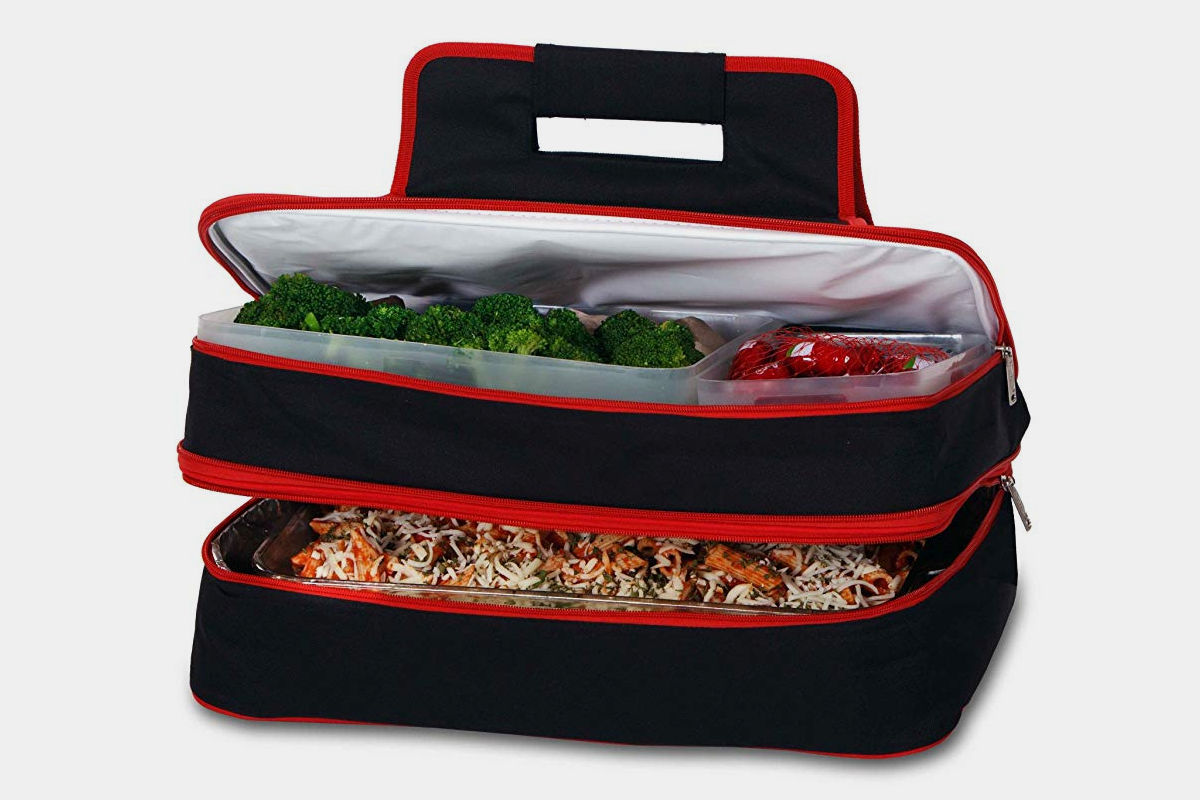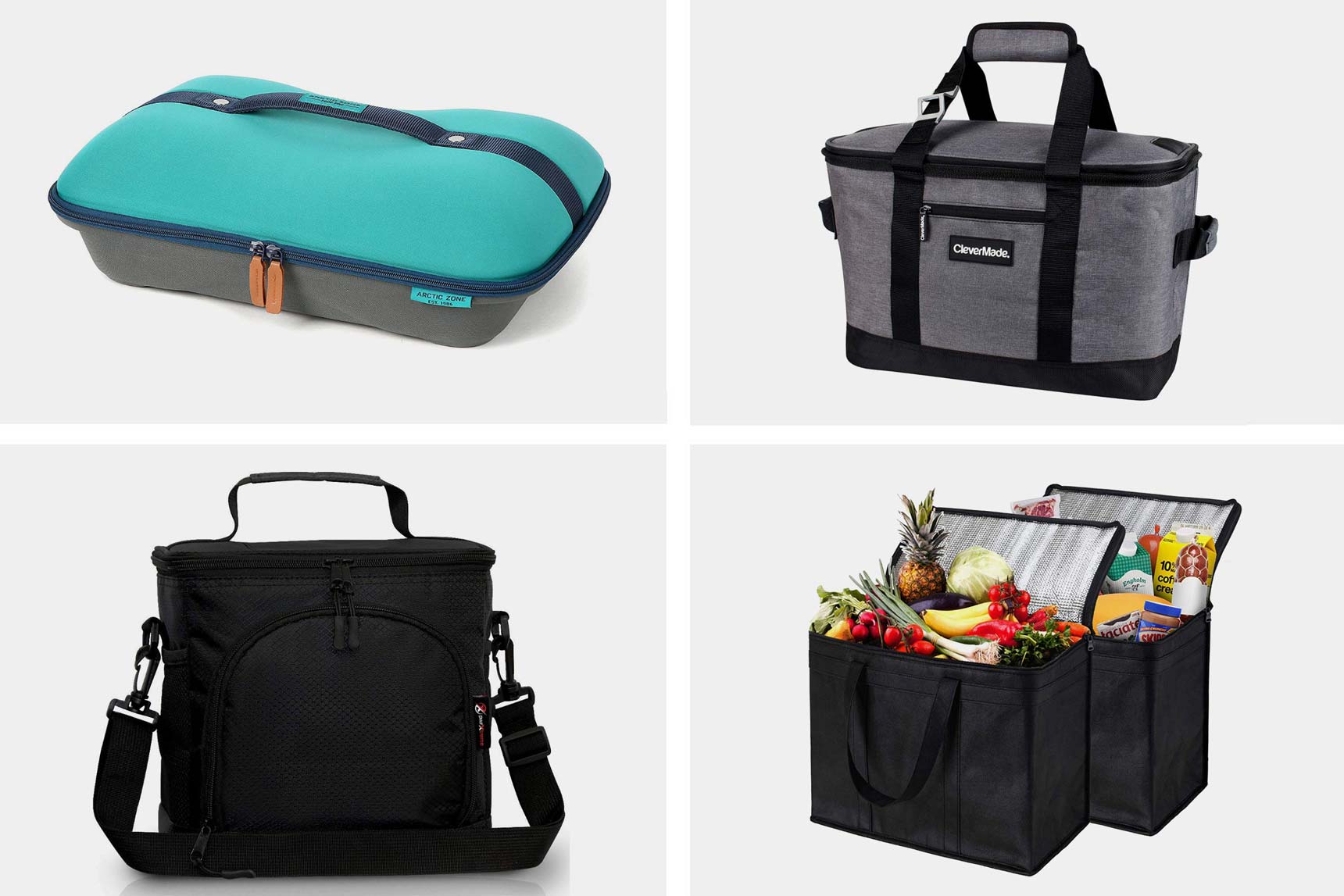Insulated food bags have become an indispensable companion for food enthusiasts and everyday individuals alike. These versatile and practical bags play a crucial role in preserving the temperature and quality of your food, ensuring that your meals remain fresh and delicious wherever you go.
From picnics and road trips to meal prep and everyday use, insulated food bags offer a myriad of benefits and features that make them a must-have for anyone who values convenience and freshness. In this comprehensive guide, we will delve into the world of insulated food bags, exploring their materials, design, uses, maintenance, and more.
Definition and Purpose
An insulated food bag is a portable container specifically designed to maintain the temperature of food items for extended periods.
Its primary function is to preserve the freshness and quality of food by providing insulation against external temperature fluctuations. This makes it an ideal solution for transporting food during picnics, road trips, or daily commutes.
Insulation and Temperature Control
Insulated food bags typically feature multiple layers of insulation, such as foam, fabric, or reflective materials. These layers work together to create a barrier that prevents heat transfer between the food and the outside environment.
By maintaining a consistent temperature, insulated food bags help to slow down the spoilage process and preserve the original flavor and texture of food items.
Materials and Insulation

Insulated food bags rely on a combination of materials and insulation to maintain the temperature of food and beverages. These components play a crucial role in ensuring that your meals and drinks stay at the desired temperature for hours.
The outer layer of insulated food bags is typically made from durable materials such as nylon, polyester, or canvas. These fabrics provide strength, water resistance, and protection against external elements. The inner lining is often made from food-grade materials like aluminum foil or plastic that are safe for food contact and help to reflect heat or cold.
Insulation Types
The insulation used in food bags is designed to create a barrier between the inside and outside of the bag, minimizing heat transfer. Common insulation materials include:
- Polyurethane foam:A lightweight and effective insulator with excellent thermal resistance.
- Polyethylene foam:A flexible and affordable insulation material with good insulating properties.
- Expanded polystyrene (EPS):Commonly known as Styrofoam, EPS is a lightweight and inexpensive insulation material with low thermal conductivity.
- Aerogel:A high-performance insulation material with exceptional thermal resistance and low density.
The thickness and density of the insulation play a significant role in determining the overall effectiveness of the bag. Thicker insulation provides better temperature retention, but it also adds bulk and weight to the bag.
Features and Design: Insulated Food Bag
Insulated food bags offer a range of features that enhance their usability and convenience. These features cater to various user needs and preferences, ensuring that food stays fresh and organized during transport.
One key feature is the incorporation of multiple compartments and organizational pockets. These allow users to separate food items, drinks, and utensils efficiently. Compartments can be insulated or non-insulated, providing options for both temperature-sensitive and non-perishable items.
Carrying Options
Insulated food bags provide various carrying options to suit different preferences and situations. They commonly feature comfortable handles for easy carrying, while some models include adjustable and padded shoulder straps for extended use. These straps distribute weight evenly, reducing strain during transport.
Exterior Materials and Durability
The exterior materials used in insulated food bags play a crucial role in durability and protection. Durable fabrics like nylon, polyester, and canvas resist wear and tear, ensuring longevity. Some bags also incorporate water-resistant or waterproof materials to protect contents from moisture and spills.
Benefits and Uses

Insulated food bags offer a range of benefits, making them an ideal choice for various scenarios. They effectively maintain the temperature of food, ensuring it stays hot or cold for extended periods.
By preserving the quality and freshness of food, insulated food bags help reduce food waste and promote healthy eating habits. Their convenience and portability make them perfect for picnics, road trips, meal prep, and other situations where food needs to be transported and kept at the desired temperature.
Specific Use Cases
- Picnics:Insulated food bags keep food and drinks cold or hot during outdoor gatherings, ensuring freshness and preventing spoilage.
- Road Trips:Long drives require food that stays fresh and at the desired temperature. Insulated food bags make it easy to transport meals and snacks without worrying about food safety or temperature loss.
- Meal Prep:Insulated food bags are ideal for meal prepping, allowing individuals to prepare meals in advance and keep them fresh until ready to consume.
Maintenance and Care
Insulated food bags require proper care to maintain their functionality and longevity. Regular cleaning and maintenance ensure optimal performance and prevent premature wear or deterioration.
Cleaning and Maintenance
To clean an insulated food bag, follow these steps:
- Remove any food residue or spills promptly.
- Hand-wash the bag with warm water and mild detergent.
- Rinse thoroughly and allow it to air dry completely before storing.
Avoid using harsh detergents or abrasive cleaners, as they can damage the fabric or insulation.
Importance of Proper Care
Proper care of insulated food bags is crucial for several reasons:
- Preserves Insulation:Proper cleaning and maintenance prevent dirt and debris from accumulating in the insulation, ensuring optimal temperature retention.
- Prevents Odor:Regular cleaning eliminates food residue and prevents the buildup of bacteria that can cause unpleasant odors.
- Extends Lifespan:Careful handling and maintenance protect the bag from damage, extending its useful life and ensuring continued reliable performance.
Types and Styles
Insulated food bags come in various types and styles, each tailored to specific needs and uses. Understanding the unique features and applications of each type can help you choose the ideal bag for your requirements.
Lunch Bags
Lunch bags are compact and portable, designed to keep food and drinks cool for a few hours. They are typically made of durable materials like nylon or canvas and feature an insulated lining to maintain temperature. Lunch bags are ideal for students, office workers, or anyone who needs to pack a quick and convenient meal.
Picnic Bags
Picnic bags are larger and more spacious than lunch bags, providing ample storage for food, drinks, and other picnic essentials. They often have multiple compartments, including a cooler section for perishable items. Picnic bags are perfect for outdoor gatherings, beach trips, or any occasion where you need to keep food fresh for an extended period.
Cooler Bags
Cooler bags are designed to keep food and drinks cold for several hours or even days. They are constructed with thick insulation and a leak-proof lining to prevent spills and maintain optimal temperature. Cooler bags are indispensable for camping, fishing, or any activity that requires keeping food fresh for an extended duration.
Backpack-style Bags, Insulated food bag
Backpack-style insulated food bags offer the convenience of a backpack with the functionality of an insulated bag. They are perfect for hikers, bikers, or anyone who needs to carry their food and drinks hands-free. Backpack-style bags typically have multiple compartments, adjustable straps, and a padded back for comfort during transport.
Brands and Comparison
When selecting an insulated food bag, it’s essential to consider reputable brands known for producing high-quality products. Several brands have established a strong presence in the market, offering a range of options to meet diverse needs and preferences.
Comparison Table
To assist in your decision-making, here’s a comparison table highlighting key features, prices, and customer reviews of some reputable brands:
| Brand | Key Features | Price Range | Customer Reviews |
|---|---|---|---|
| Arctic Zone | Leak-proof lining, multiple compartments, durable construction | $20-$50 | 4.5/5 stars (average) |
| Thermos | Vacuum insulation, spacious capacity, easy-to-clean interior | $30-$70 | 4.7/5 stars (average) |
| Coleman | Foldable design, puncture-resistant exterior, antimicrobial lining | $25-$60 | 4.2/5 stars (average) |
| Igloo | CoolRise technology, leak-proof zipper, adjustable shoulder strap | $20-$40 | 4.3/5 stars (average) |
| LunchBots | Stainless steel construction, eco-friendly materials, modular design | $30-$80 | 4.6/5 stars (average) |
Remember, this comparison is based on general information and may not reflect the specific needs and preferences of every individual. It’s recommended to conduct further research and consider factors such as intended use, capacity, insulation capabilities, and personal style before making a purchase.
Trends and Innovations
The insulated food bag industry is constantly evolving, with new trends and innovations emerging to meet the changing needs of consumers. These advancements range from improvements in insulation materials to the integration of smart technology, all aimed at enhancing the functionality and convenience of these bags.
One significant trend is the focus on temperature control, allowing users to maintain the desired temperature of their food and drinks for extended periods. This is achieved through the use of advanced insulation materials and innovative design features, such as reflective linings and adjustable insulation layers.
GPS Tracking
Another notable innovation is the incorporation of GPS tracking technology into insulated food bags. This feature enables users to track the location of their bag in real-time, providing peace of mind and security. GPS tracking is particularly useful for individuals who frequently travel or leave their bags unattended in public places.
Antimicrobial Materials
In response to growing concerns about hygiene and food safety, insulated food bags are now being manufactured using antimicrobial materials. These materials inhibit the growth of bacteria and mold, ensuring that food stays fresh and safe for consumption. Antimicrobial materials are particularly beneficial for individuals with compromised immune systems or those who handle perishable foods.
Environmental Considerations

Insulated food bags can have an impact on the environment, but sustainable practices and responsible use can minimize this impact.
Sustainable Materials and Practices
Many insulated food bags are made from recycled materials, such as plastic bottles or foam. This reduces the amount of waste going to landfills. Some bags are also made from renewable resources, such as bamboo or hemp. These materials are biodegradable and have a lower environmental impact than traditional materials.
Responsible Use and Disposal
To reduce the environmental impact of insulated food bags, use them responsibly and dispose of them properly. When possible, choose bags made from sustainable materials. Wash bags regularly to keep them clean and free of bacteria. When a bag is no longer usable, recycle it or dispose of it in a landfill.
Safety and Regulations
Insulated food bags generally pose minimal safety concerns when used as intended. However, certain precautions should be taken to ensure safe handling and usage.
Proper Usage
It is crucial to follow the manufacturer’s instructions for proper use and maintenance. Avoid overfilling the bag, as this can strain the seams and zippers, potentially leading to leaks or tears.
Hygiene and Food Safety
Insulated food bags can harbor bacteria if not cleaned regularly. Ensure thorough cleaning after each use, especially if the bag has been in contact with raw meat or other perishable items.
Disposal and Environmental Considerations
Proper disposal of insulated food bags is essential to minimize environmental impact. Many insulated bags are made from synthetic materials that may not biodegrade easily. Check with local recycling programs to determine the best disposal methods in your area.
FAQ Summary
What are the different types of insulated food bags?
Insulated food bags come in various types, including lunch bags, picnic bags, cooler bags, and backpack-style bags. Each type offers unique features and uses, depending on your specific needs.
How do I choose the right insulated food bag for me?
Consider factors such as the size and capacity you need, the insulation type and effectiveness, and the features that are important to you, such as compartments, carrying options, and exterior materials.
How do I clean and maintain my insulated food bag?
Regular cleaning is essential to ensure the longevity and effectiveness of your insulated food bag. Wipe it down with a damp cloth and mild soap, and allow it to dry thoroughly before storing it.
